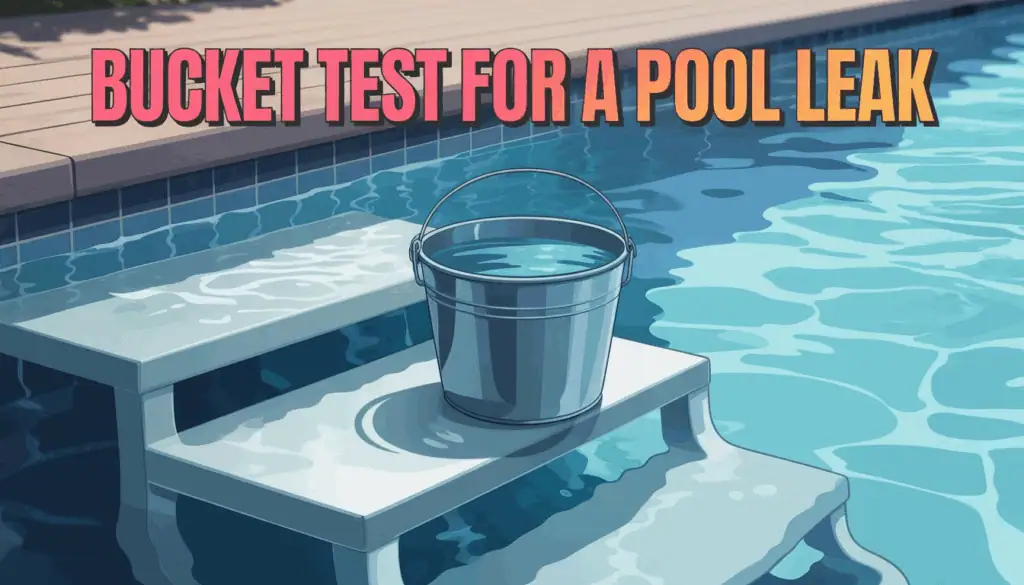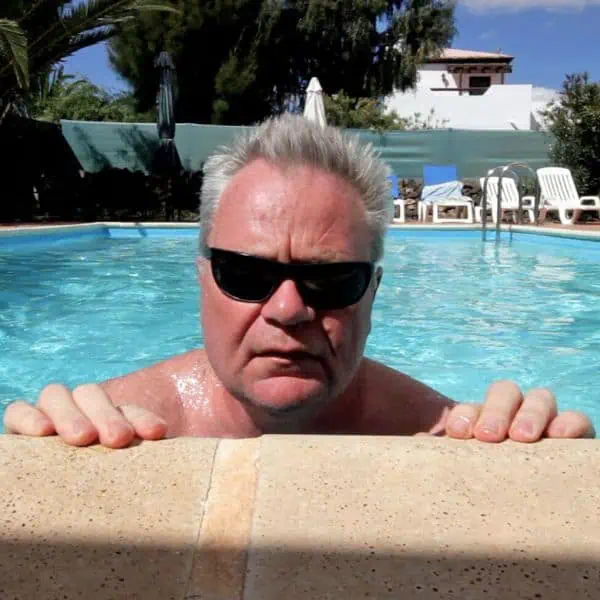Owning a swimming pool is pretty great—until you start to wonder if it’s leaking. Is that water loss just normal evaporation, or is something actually wrong? The bucket test is a super simple trick you can try yourself to figure out if you’re dealing with a leak.

This test only takes a few minutes to set up and might save you a headache (and some cash) before you call in a pro. Just follow the steps, and you’ll see whether your water level reducing is normal or something you need to fix.
Every pool owner should know the bucket test. You don’t need fancy equipment—just a bucket and some water. It’s about as low-tech as it gets, but it works.
What Is the Bucket Test and Why Use It?
When your pool starts losing water, it’s easy to get worried (and nobody likes a spike in their water bill). The bucket test is a do-it-yourself way to check if your swimming pool might actually have a leak.
Understanding Pool Water Loss
Pools lose water for two main reasons: evaporation and leaks. Evaporation’s normal, especially when it’s hot, sunny, or windy. But if you notice the water level dropping faster than usual, it’s natural to wonder if there’s a leak.
Just eyeballing the pool doesn’t always help. The bucket test lets you figure out if you’re just dealing with the weather or if you’ve got a real problem on your hands.
Leaks can make your pool lose a lot more water than you’d expect. Spotting them early can save you money and prevent damage.

How Doing the Bucket Test Detects if A Pool Is Leaking
Here’s the idea: you compare how much water disappears from your pool to how much evaporates from a bucket sitting in the same conditions. The bucket only loses water to evaporation—if your pool loses more, you probably have a leak.
Here’s what you do:
- Fill a bucket with pool water and set it on a pool step.
- Mark the water levels on the inside and outside of the bucket.
- Let the pool run as usual for 24-48 hours.
- Check the drop in water level inside and outside the bucket.
If the pool’s water drops more than the bucket’s, you might have a leak. This little test helps you decide whether you need to investigate further or just chalk it up to evaporation.
Step-By-Step Guide to Performing the Bucket Test

With just a bucket and a bit of patience, you can figure out if your pool’s leaking or just losing water to the weather.
Gathering Supplies and Preparation
First things first—grab a clean 5-gallon bucket (or at least a big one that will sit partly in the pool water). Skip tiny containers; they won’t give you a good reading.
Try and choose one that is relatively straight outside (ie. that it doesn’t taper too much) as the level in a tapered bucket will decrease more quickly as it goes down.
Turn off any automatic fountains, water features, or your chlorinator. If you’ve got a pool pump running, switch it off too. That way, you are only measuring natural water loss, not splashing or pump action.
Keep a waterproof marker or some tape ready to mark water levels. Try to pick a day when rain isn’t forecast, and the temperature’s typical for your area – otherwise, your results might get thrown off.
Setting Up the Bucket in Your Pool
Bring the bucket to the pool and fill it with pool water, about 1 inch from the top is good. That way, the water in the bucket will be close in temperature to the pool and the wind will still affect it.
Set the filled bucket on a pool step. Ideally, you want the water level in the bucket to match the pool water level outside. You may need to put something under the bucket, such as a a small paver or clean bricks to get the levels close. Make sure it’s steady and won’t tip over (nobody wants to start over because the bucket capsized).
Both the pool and the bucket should get the same sun, wind, and temperature. The only real difference? The water in the bucket can’t leak out, but pool water outside could.
Marking Water Levels and Waiting Period
Use your marker or tape to make two marks:
- One in the bucket for the bucket water level (unless using a transparent bucket in which case both can be marked on the outside)
- One outside, lined up with the pool water level
Take a quick photo if that’s easier—just make sure you remember which mark is which!
Now, leave everything alone for 24 to 72 hours. Try not to use the pool during this time. If it rains or you add water, you’ll have to start over, since that’ll mess up your results. After that period, come back and check what’s changed.
Test Results: Evaporation or Leak?
Check how much the pool water level dropped compared to the water in the bucket. If both levels dropped the same amount, you’re probably just seeing evaporation.
If the pool’s water level dropped more than the water inside the bucket, there’s a good chance you’ve got a leak. To be sure, use a ruler and measure from your original marks to the new water lines, both inside and outside the bucket. If the water level outside is only a few millimetres (1/6 inch) then that may be insignificant.
Here’s a quick table for reference:
| Observation | What It Means |
|---|---|
| Levels dropped the same inside & outside bucket | Likely evaporation |
| Pool level dropped more than bucket | Possible pool leak |
Double-check your marks, and jot down your findings so you don’t forget (or snap another photo).
What To Do If You Suspect A Leak in Your Pool
If the test points to a pool leak, don’t rush to add water or turn the pump back on just yet. Double-check your setup and make sure nothing threw off your results—sometimes a small mistake can mess things up.
Look for obvious signs around the pool liner and equipment—cracks, wet spots, anything unusual. If you’re feeling extra thorough, try some pool leak detection dye near any suspicious areas.
Read: Why is my pool losing water – common causes
Still can’t find the culprit? It’s probably time to call a professional leak detection company or ask about leak detection services.
A pool pro will have special tools to test your system and handle leak repair if you need it. It’s always better to act sooner rather than later—catching a leak early makes your life as a pool owner way easier.
Frequently Asked Questions
Here’s what people usually want to know about the bucket test—how to actually do it, how to read the results, ways to get more accurate numbers, what to do if you find a leak, and whether it works for all kinds of pools.
How can I tell if my swimming pool bucket test indicates a leak?
Check if the water level outside the bucket dropped more than the water level inside the bucket. If so, it suggests your pool is losing water from a possible leak.
Are there tips to ensure the bucket test for my pool is done accurately?
Do the test when the weather is calm, without heavy rain or wind. Make sure the pool pump stays off, and no one swims during the test. Use a waterproof marker or tape that will not fade or slip underwater.
Can the bucket test be used for leak detection in any type of pool?
Yes, you can use the bucket leak test on in-ground pools, above-ground pools, and pools with different finishes. The main steps do not change based on the pool type.
After conducting the bucket test, how do I locate the source of the swimming pool leak?
Take a walk around the pool and see if you spot any suspicious wet spots or cracks around the waterline or equipment.
Give the pool pipes, fittings, and skimmers a close look—sometimes leaks are hiding in plain sight.
If you’re still scratching your head, it might be time to call in a pool leak detection service for some professional help.





Leave a Reply